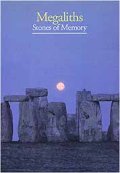<< Text Pages >> Little Salt Spring - Natural Stone / Erratic / Other Natural Feature in United States in The South
Submitted by bat400 on Tuesday, 22 March 2011 Page Views: 10244
Natural PlacesSite Name: Little Salt Spring Alternative Name: Little Salt Spring Archeological and Ecological PrCountry: United States Region: The South Type: Natural Stone / Erratic / Other Natural Feature
Nearest Town: Sarasota, FL Nearest Village: North Port, FL
Latitude: 27.074900N Longitude: 82.2331W
Condition:
| 5 | Perfect |
| 4 | Almost Perfect |
| 3 | Reasonable but with some damage |
| 2 | Ruined but still recognisable as an ancient site |
| 1 | Pretty much destroyed, possibly visible as crop marks |
| 0 | No data. |
| -1 | Completely destroyed |
| 5 | Superb |
| 4 | Good |
| 3 | Ordinary |
| 2 | Not Good |
| 1 | Awful |
| 0 | No data. |
| 5 | Can be driven to, probably with disabled access |
| 4 | Short walk on a footpath |
| 3 | Requiring a bit more of a walk |
| 2 | A long walk |
| 1 | In the middle of nowhere, a nightmare to find |
| 0 | No data. |
| 5 | co-ordinates taken by GPS or official recorded co-ordinates |
| 4 | co-ordinates scaled from a detailed map |
| 3 | co-ordinates scaled from a bad map |
| 2 | co-ordinates of the nearest village |
| 1 | co-ordinates of the nearest town |
| 0 | no data |
Internal Links:
External Links:
Natural Feature in Sarasota County, Florida.
Little Salt Spring is a sinkhole with a very low flow anoxic spring forming a circular pond. Evidence of North American Mega Fauna and the signs of Hunters and Gathers have been found here, including some of the oldest artifacts (10000 - 5000 BC) ever found in the south eastern United States.
During Florida's Ice Age prehistory, the peninsula was much drier and the spring would have attracted prey and predators. The existing sinkhole was formed about 15000 years ago. The water level has varied over time and a series of ledges 16 to 27 feet from the current surface lie beneath an oxygen depleted water layer. It's at this level that there have been finds of wooden stakes, textile fragments, hair, bone, and tools.
The Preserve was donated to the University of Miami. Rosenstiel School's Division of Marine Affairs manages the site and conducts excavations and other studies within the preserve. The sinkhole and spring are on the National Register of Historic Places.
The site is adjacent to Butler Park in North Port, but Little Salt Spring itself and the surrounding preserve are normally open to the general public only on tours.
Additional information of the finds and the difficulty of underwater excavation can be found in this article, Diving into Paleo Florida from the Mammoth Trumpet.
Note: Archaeologists hope remains of a 10k year old spear helps piece together how Florida's earliest inhabitants lived. See article summaries in comment.
You may be viewing yesterday's version of this page. To see the most up to date information please register for a free account.
Do not use the above information on other web sites or publications without permission of the contributor.
Nearby Images from Flickr






The above images may not be of the site on this page, but were taken nearby. They are loaded from Flickr so please click on them for image credits.
Click here to see more info for this site
Nearby sites
Click here to view sites on an interactive map of the areaKey: Red: member's photo, Blue: 3rd party photo, Yellow: other image, Green: no photo - please go there and take one, Grey: site destroyed
Download sites to:
KML (Google Earth)
GPX (GPS waypoints)
CSV (Garmin/Navman)
CSV (Excel)
To unlock full downloads you need to sign up as a Contributory Member. Otherwise downloads are limited to 50 sites.
Turn off the page maps and other distractions
Nearby sites listing. In the following links * = Image available
30.0km WNW 299° Spanish Point Shell Midden* Artificial Mound
41.3km NW 313° Humming Stone Sarasota (Summstein)* Modern Stone Circle etc
46.8km S 170° Pineland* Ancient Village or Settlement
50.8km N 357° Portavant Mound Site Artificial Mound
64.3km NW 321° De Soto National Memorial* Artificial Mound
64.6km NW 320° Pillsbury Temple Mound Artificial Mound
65.2km NNW 327° Madira Bickel Mound State Archaeological Site* Artificial Mound
81.2km SSE 153° Mound Key Archaeological State Park Artificial Mound
93.5km NNW 337° Weedon Island Preserve* Barrow Cemetery
96.3km ESE 107° Ortona Prehistoric Village Artificial Mound
107.2km E 97° Fort Center Archaeological Site* Artificial Mound
112.8km SSE 158° Naples Canal Not Known (by us)
112.8km NNW 337° Safety Harbor Mound* Artificial Mound
140.9km ESE 114° Big (Tony's) Circle Mounds Artificial Mound
141.9km NNW 340° Oelsner Indian Mound* Artificial Mound
144.0km E 95° Lake Okeechobee* Ancient Village or Settlement
175.3km E 97° Big Mound City Misc. Earthwork
177.1km NE 55° Three Forks Marsh Artificial Mound
192.2km ENE 71° Vero Beach* Ancient Village or Settlement
205.8km NE 44° Brevard Museum of History and Natural Sciences* Museum
208.1km N 350° Crystal River Archaeological State Park* Barrow Cemetery
212.7km NE 40° Windover (Florida)* Barrow Cemetery
214.2km E 93° Jupiter Inlet Mound* Artificial Mound
216.6km NNE 27° Indian Mound Village Site* Artificial Mound
228.3km NNE 22° Hontoon Island State Park* Artificial Mound
View more nearby sites and additional images






 We would like to know more about this location. Please feel free to add a brief description and any relevant information in your own language.
We would like to know more about this location. Please feel free to add a brief description and any relevant information in your own language. Wir möchten mehr über diese Stätte erfahren. Bitte zögern Sie nicht, eine kurze Beschreibung und relevante Informationen in Deutsch hinzuzufügen.
Wir möchten mehr über diese Stätte erfahren. Bitte zögern Sie nicht, eine kurze Beschreibung und relevante Informationen in Deutsch hinzuzufügen. Nous aimerions en savoir encore un peu sur les lieux. S'il vous plaît n'hesitez pas à ajouter une courte description et tous les renseignements pertinents dans votre propre langue.
Nous aimerions en savoir encore un peu sur les lieux. S'il vous plaît n'hesitez pas à ajouter une courte description et tous les renseignements pertinents dans votre propre langue. Quisieramos informarnos un poco más de las lugares. No dude en añadir una breve descripción y otros datos relevantes en su propio idioma.
Quisieramos informarnos un poco más de las lugares. No dude en añadir una breve descripción y otros datos relevantes en su propio idioma.